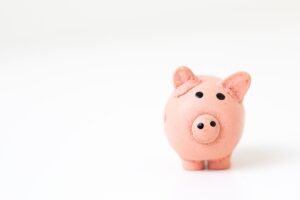A Brief Overview of the Common Chapters of Bankruptcy

Bankruptcy stops all collection actions, such as wage garnishments, lawsuits, and harassment by third-party debt collectors. It can get rid of unsecured debt that you can’t afford to repay, such as credit card and medical bills. Once you’re on stronger financial footing, your credit score will typically go up after bankruptcy, not down.
There are two common types of consumer bankruptcy: Chapter 7 and Chapter 13. Your income, assets, and overall financial situation will dictate which option is better for you, but both types can help consumers who are overwhelmed by debt.
Chapter 7- An Overview
Also known as a liquidation bankruptcy, Chapter 7 is intended for those who have little to no disposable income. In other words, after meeting your family’s basic living expenses, you don’t have enough money left over to pay down your debts.
To qualify for Chapter 7, you’ll have to pass a means test, which compares your household income to the median amount for a California household the same size as yours. If you make the same amount or less, you can file for Chapter 7. If you make more, you may still be able to file, but it’s also possible that you will have to file for Chapter 13 instead.
Chapter 7 filings are over in a matter of months and you can discharge most or all of your secured debt. The downside is that you may have to surrender some of your personal property to your trustee to sell for the benefit of your creditors. This requirement has inspired the myth that if you go bankrupt, you’ll “lose everything.”
The truth is that most Chapter 7 filers are able to protect their assets using an exemption. In California, you can choose between two state exemption systems, one of which is geared towards those who don’t have a lot of equity in their home.
Chapter 13- An Overview
If you have assets that you don’t want to lose in a Chapter 7 filing and/or you make enough money to repay some or all of your debts over time, Chapter 13 lets you address your obligations without having to surrender any property. Instead, you repay your creditors over a three- to five-year period, after which you receive a discharge.
Chapter 13 can be especially beneficial for struggling homeowners. The automatic stay stops the foreclosure process and gives you a chance to catch up on your mortgage arrears. Other benefits include:
- It can stop an eviction due to nonpayment of rent and let you repay your landlord while remaining current with your rent.
- If someone else cosigned any of your debts, your creditors will not go after them as long as you make the monthly repayments.
- Your payment plan can include unpaid child support, spousal support, and other debts that cannot be discharged in bankruptcy.
The downside is that it can take three to five years to discharge your debts, but if you have a steady source of income and property you want to protect from seizure, Chapter 13 may be the best way for you to regain solvency.
Which Chapter Should You File?
If you know that you can’t afford to repay your debts and your creditors are taking collection actions against you, talk to a California bankruptcy attorney who can help you decide which chapter is best suited to provide the relief you need. At Hedtke Law Group, our goal is to guide you through the bankruptcy process so that you get the respite you need to rebuild your finances. To schedule a confidential consultation, call us today at (909) 579-2233.